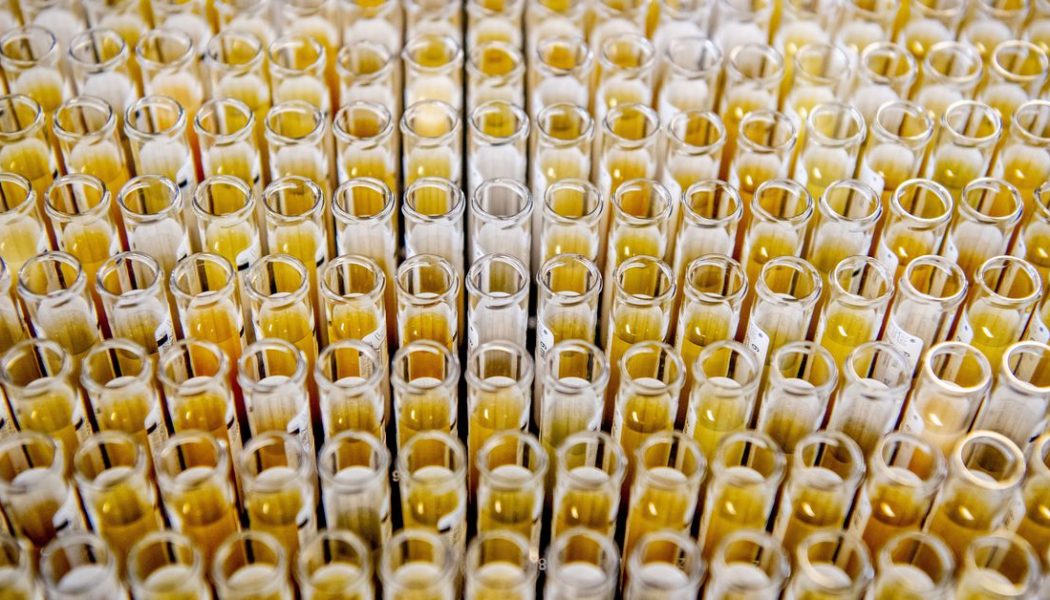
On January 8th, I asked The Verge’s science team to keep an eye on early reports of a new virus that had recently emerged in China. When I dropped an article about that new virus from The Washington Post in Slack, someone joked that 2020 was off to a strong start, clearly jinxing the entire year for the rest of humanity. Whoops.
Jokes aside, this past decade, year, six and a half months has featured a disturbing flood of terrible, horrible, no good, very bad news. More than half a year in and not only do we still not know when this will all end, we’re also seeing a tsunami of new cases in the US and record-high hospitalizations.
There’s so much we still don’t know, but we do know that this is going to keep going for a long, long time. We’ve got to pace ourselves if we’re going to make it. That’s why we’re starting with a weekly format for this column instead of bombarding you with a daily dose of news. Hopefully we can give you some context for the big headlines and help you keep track of our collective scientific progress as we stumble our way toward the future. It’s still an experiment, but these are a few things we’ll keep an eye on:
- Research – What we’re learning about the virus itself: how it spreads and what it does in the human body.
- Development – Notable news from the vaccine and treatment fronts: we won’t link to every paper, but we’ll keep track of general progress and major milestones when they come up.
- COVID Perspectives – This is a disease that has profoundly shaken, ended, and wrecked lives. When looking at the overwhelming numbers, we can sometimes forget that each case and death was a human being. These stories remind us that there’s more to the numbers.
We might also throw in a bit of non-coronavirus news just to remind you that there are other things going on in the world. Let’s get started.
Research
- “Of all the viruses and outbreaks that I have been involved with over the last four decades, I have never seen a virus in which the spectrum of seriousness is so extreme. This disease goes from nothing to death! So that has really surprised me,” Anthony Fauci said in an interview in The New York Times this week. For context, some of the viruses Fauci has confronted include HIV, Ebola, and Zika. (Jennifer Senior / The New York Times)
- What scientists are learning about how long Covid-19 immunity lasts: If you want a deep dive into the current state of immunity research six months into the pandemic, our colleagues at Vox have you covered. There’s still a lot to learn, but there’s also a lot of progress. (Brian Resnick and Umair Irfan / Vox)
Development
- Studies provide glimpse at efficacy of Covid-19 vaccines from Oxford-AstraZeneca and CanSino: A top COVID-19 vaccine candidate produced a strong immune response and didn’t produce severe side effects, according to a study published in the medical journal The Lancet. The study focused on a vaccine candidate made by Oxford University and Astra-Zeneca and involved nearly 1,000 patients. Another study, also published in The Lancet, found that a vaccine produced by Chinese company CanSino Biologics produced an immune response but wasn’t as effective in people over age 65. Both drugs will now have to complete phase three trials and be tested on hundreds, if not thousands more people. (Matthew Herper, Damian Garde, and Helen Branswell / Stat)
- Some Vaccine Makers Say They Plan to Profit From Coronavirus Vaccine: Executives from pharmaceutical companies testified before Congress on Tuesday and four of them were optimistic that the world would have a vaccine by late 2020 or early 2021. Two, AstraZeneca and Johnson & Johnson, said they would produce the vaccine at cost. Another two, Moderna Therapeutics and Pfizer, did not. (Katherine J. Wu / The New York Times)
- In related news: On Wednesday, Pfizer and German company BioNTech announced that they were jointly receiving $1.95 billion from the US government to develop 600 million doses of a vaccine. They join other companies who have already received commitments of federal funding. Moderna is getting $483 million, Johnson and Johnson is getting $456 million, and AstraZeneca is getting $1 billion.
- Notes of caution — While most of the executives put a rosy timeline before Congress, other experts are more skeptical. Fauci told The New York Times that families were not likely to see a vaccine until next year. “I think it’s going to be sometime in 2021. I don’t know whether that’s going to be the first quarter of 2021, the first half — it’s difficult to say,” Fauci said.
Immunology experts have also been cautious, and so have other pharmaceutical executives. “I think when people tell the public that there’s going to be a vaccine by the end of 2020, they do a grave disservice to the public,” Merck CEO Kenneth Frazier said in an interview hosted by Harvard Business School last week. “I think at the end of the day, we don’t want to rush the vaccine before we’ve done rigorous science.”
- Vaccine development cheat sheet — Here’s a rundown from May of the four major different vaccine development strategies in the works. (Nicole Wetsman / The Verge)
Want to help researchers find a vaccine? The National Institutes of Health (NIH) created a new network called the COVID-19 Prevention Trials Network (COVPN) that will help connect volunteers with some of the large clinical trials that are needed to test potential coronavirus vaccines.
“Each of the Phase 3 clinical trials that the COVPN will conduct will require thousands of volunteers,” NIH director Francis Collins said in a statement. “Community engagement, particularly with the communities most vulnerable to COVID-19’s severe outcomes, will be critical to the success of this research endeavor.”
If you want to volunteer, you’ll be asked to complete a short survey of personal questions, including where you live. If you’re a good candidate for one of the many studies going on across the country, a researcher will reach out to you and give you more information on the study. You can then decide whether you want to participate.
COVID Perspectives
Lopez drives to his fourth stop of the day, a body in the back, a cigarette in his hand. He’s reflecting on the virus and how the calls to pick up bodies started coming all of a sudden, one after the other. He takes his job personally. “It could be one of my family members, it could be a friend of mine.”
Shannon Najmabadi and Miguel Gutierrez Jr. report for The Texas Tribune on what it’s like to be one of “last responders” in the Rio Grande Valley, where deaths and case numbers remain high.
More than numbers
To the more than 15,762,392 people worldwide who have tested positive, may your road to recovery be smooth.
To the families and friends of the 640,278 people who have died worldwide — 145,556 of those in the US — your loved ones are not forgotten.
Stay safe, everyone.










